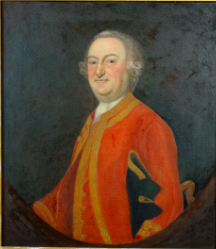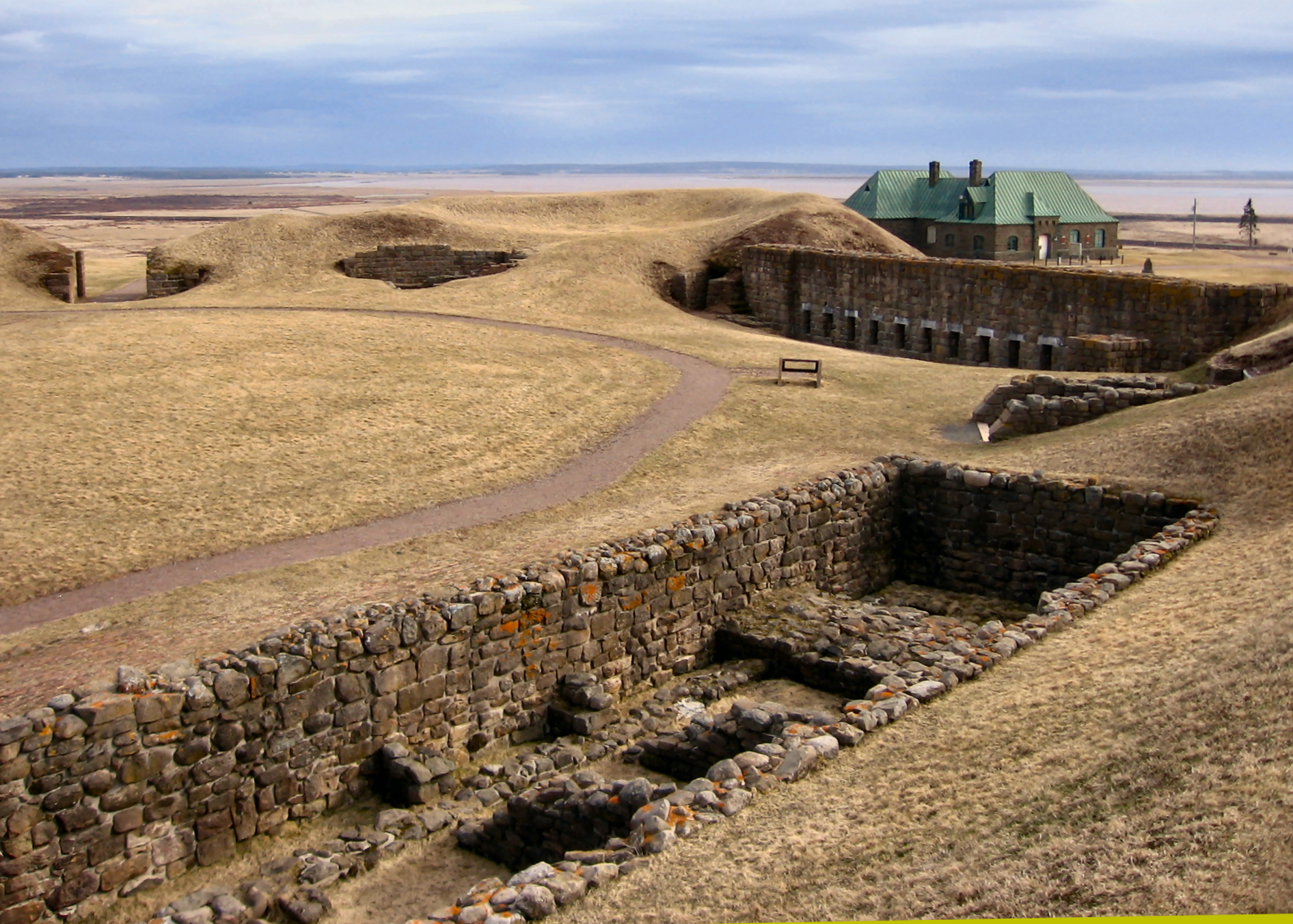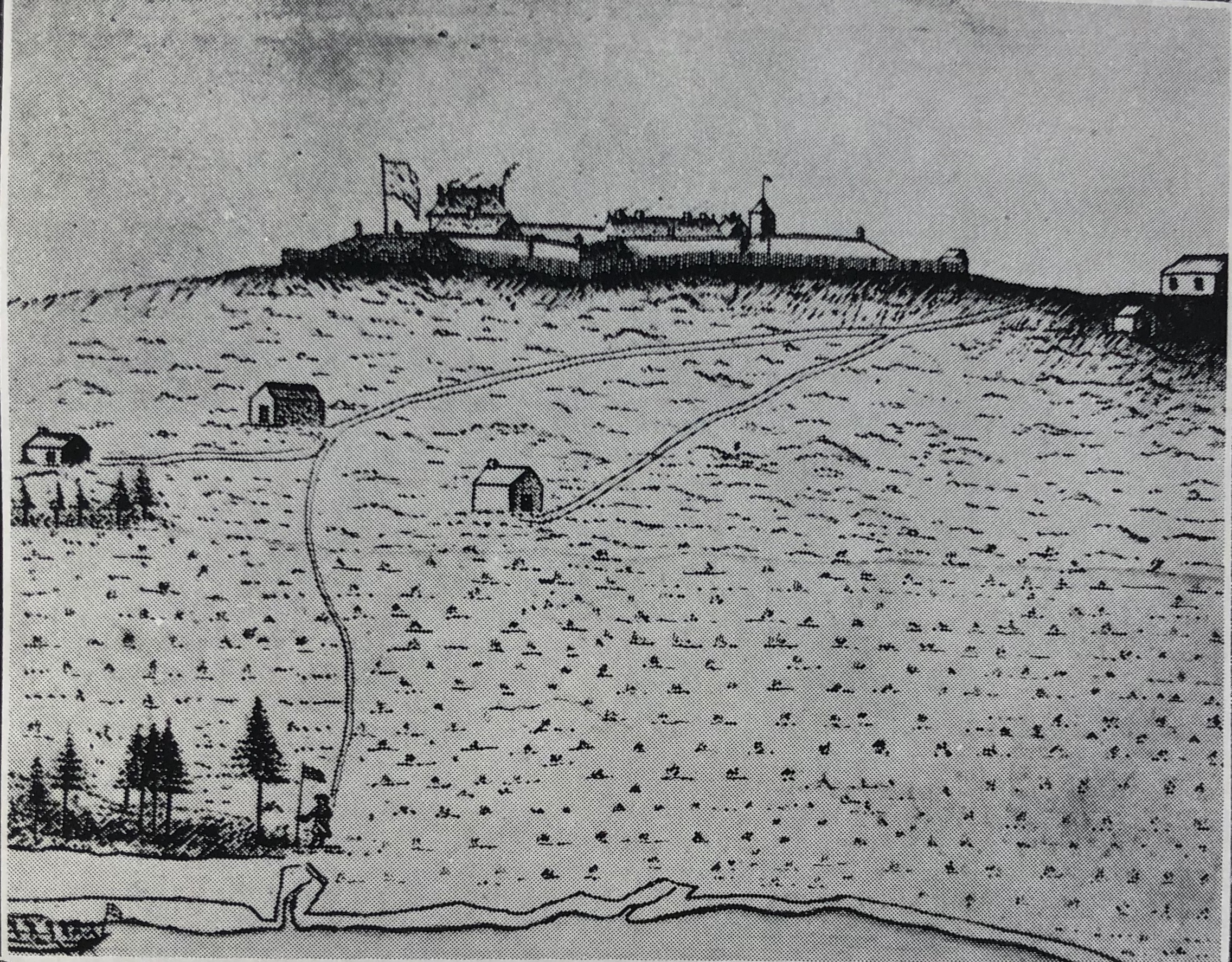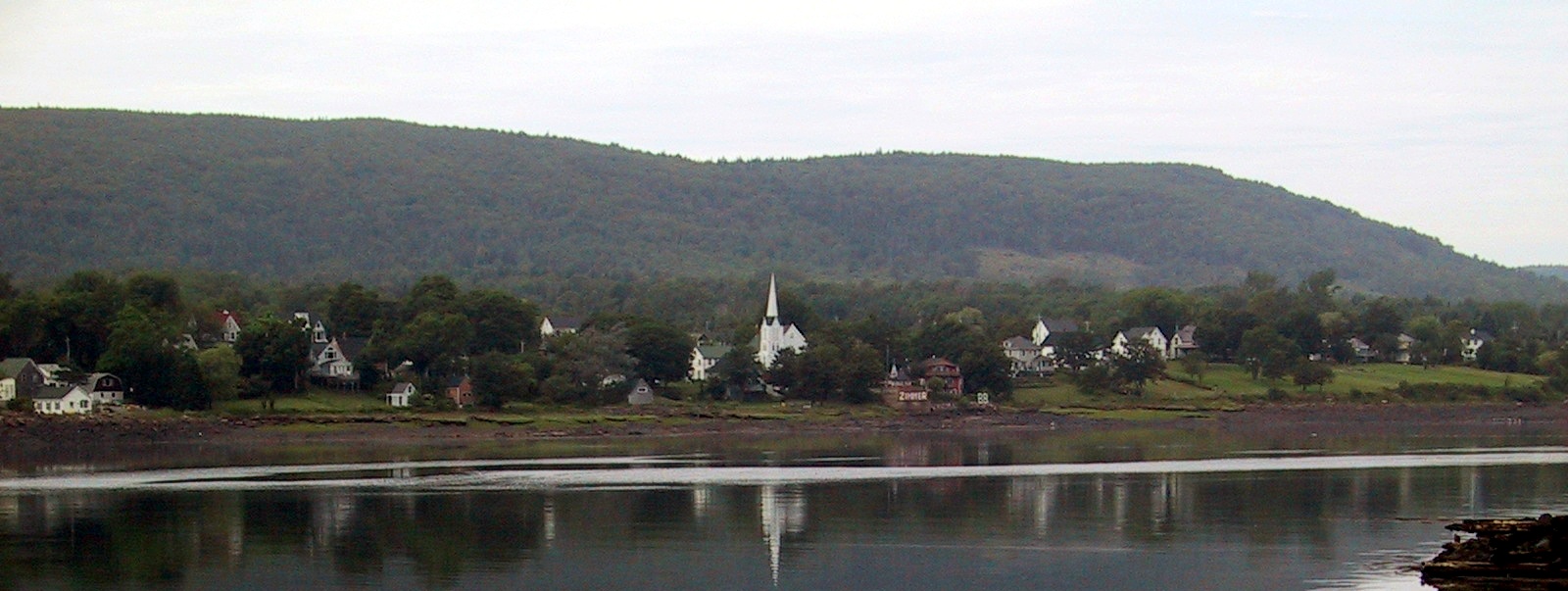|
Bay Of Fundy Campaign (1755)
The Bay of Fundy campaign occurred during the French and Indian War (the North American theatre of the Seven Years' War) when the British ordered the Expulsion of the Acadians from Acadia after the Battle of Fort Beauséjour (1755). The campaign started at Chignecto and then quickly moved to Grand-Pré, Rivière-aux-Canards, Pisiguit, Cobequid, and finally Annapolis Royal. Approximately 7,000 Acadians were deported to the New England colonies. Historical context The British conquest of Acadia took place in 1710. Over the next 45 years the Acadians refused to sign an unconditional oath of allegiance to Britain. During this time period Acadians participated in various militia operations against the British, such as the raids on Dartmouth, Nova Scotia. The Acadians also maintained vital supply lines to the French Fortress of Louisbourg and Fort Beauséjour. During the French and Indian War (the North American theatre of the Seven Years' War), the British sought both to ne ... [...More Info...] [...Related Items...] OR: [Wikipedia] [Google] [Baidu] |
John Winslow (British Army Officer)
Major-General John Winslow (10 May 1703 – 17 April 1774), descendant of Edward Winslow, was an officer during the French and Indian War. John Winslow belonged to one of the most prominent families of New England; his great-grandfather Edward and grandfather Josiah Winslow had both been governors of the Plymouth Colony. He was born in Marshfield, Massachusetts in 1703 as son of Sarah and Isaac Winslow. (During Father Rale's War, Winslows older brother Josiah was given the command of Fort St. George (Thomaston, Maine) and was killed by natives of the Wabanaki Confederacy in the Northeast Coast Campaign (1724). The following year, Winslow named his first born after his deceased brother.) In 1725, he married Mary Little, a descendant of Richard Warren. They had three children: Josiah, Pelham and Isaac Winslow. One of his slaves was Briton Hammon who published the ''Narrative of the Uncommon Suffering and Surprizing Deliverance of Briton Hammon, a Negro Man'' in 1760. Aft ... [...More Info...] [...Related Items...] OR: [Wikipedia] [Google] [Baidu] |
Acadia
Acadia (french: link=no, Acadie) was a colony of New France in northeastern North America which included parts of what are now the The Maritimes, Maritime provinces, the Gaspé Peninsula and Maine to the Kennebec River. During much of the 17th and early 18th centuries, Norridgewock on the Kennebec River and Castine, Maine, Castine at the end of the Penobscot River were the southernmost settlements of Acadia. The French government specified land bordering the Atlantic coast, roughly between the 40th parallel north, 40th and 46th parallel north, 46th parallels. It was eventually divided into British colonies. The population of Acadia included the various indigenous First Nations in Canada, First Nations that comprised the Wabanaki Confederacy, the Acadian people and other French people, French settlers. The first capital of Acadia was established in 1605 as Port-Royal (Acadia), Port-Royal. An English force from Virginia attacked and burned down the town in 1613, but it was later ... [...More Info...] [...Related Items...] OR: [Wikipedia] [Google] [Baidu] |
Battle Of Petitcodiac
The Battle of Petitcodiac was an engagement which occurred during the Bay of Fundy campaign of the French and Indian War. The battle was fought between the British colonial forces from Massachusetts and Acadian militiamen led by French officer Charles Deschamps de Boishébert et de Raffetot on September 4, 1755. It took place at the Acadian village of Village-des-Blanchard on the Petitcodiac River. Background After the capture of Fort Beauséjour in June 1755 during the French and Indian War, the British initiated a campaign to deport the Acadians, French colonizers in Acadia. Using Fort Cumberland as a base, British forces made forays into the surrounding countryside, rounding up Acadians to deport and destroying their colonial settlements. Some of the Acadians surrendered, while others fled from the coastal communities into the interior, where they joined with local Miꞌkmaq and Maliseet forces and resisted the deportation efforts. Charles Deschamps de Boishébert et de Ra ... [...More Info...] [...Related Items...] OR: [Wikipedia] [Google] [Baidu] |
Robert Monckton
Lieutenant-General Robert Monckton (24 June 1726 – 21 May 1782) was an officer of the British Army and colonial administrator in British North America. He had a distinguished military and political career, being second in command to General James Wolfe at the battle of Quebec and later being named the Governor of the Province of New York. Monckton is also remembered for his role in a number of other important events in the French and Indian War (the North American theatre of the Seven Years' War), most notably the capture of Fort Beauséjour in Acadia, and the island of Martinique in the West Indies, as well as for his role in the deportation of the Acadians from British controlled Nova Scotia and also from French-controlled Acadia (present-day New Brunswick). The city of Moncton, New Brunswick, (about west of Fort Beauséjour) and Fort Monckton in Port Elgin, New Brunswick, are named for him. A second more important Fort Monckton in Portsmouth, England, is also named for him ... [...More Info...] [...Related Items...] OR: [Wikipedia] [Google] [Baidu] |
Fort Beauséjour
Fort Beauséjour (), renamed Fort Cumberland in 1755, is a large, five-bastioned fort on the Isthmus of Chignecto in eastern Canada, a neck of land connecting the present-day province of New Brunswick with that of Nova Scotia. The site was strategically important in Acadia, a French colony that included primarily the Maritimes, the eastern part of Quebec, and northern Maine of the later United States. The fort was built by the French from 1751 to 1752. They surrendered it to the British in 1755 after their defeat in the Battle of Fort Beauséjour, during the Seven Years' War. The British renamed the structure as Fort Cumberland. The fort was strategically important throughout the Anglo-French rivalry of 1749–63, known as the French and Indian Wars by British colonists. Less than a generation later, it was the site of the 1776 Battle of Fort Cumberland, when the British forces repulsed sympathisers of the American Revolution. Since 1920 the site has been designated as a National ... [...More Info...] [...Related Items...] OR: [Wikipedia] [Google] [Baidu] |
Louisbourg
Louisbourg is an unincorporated community and former town in Cape Breton Regional Municipality, Nova Scotia. History The French military founded the Fortress of Louisbourg in 1713 and its fortified seaport on the southwest part of the harbour, naming it in honour of Louis XIV. The harbour had been used by European mariners since at least the 1590s, when it was known as English Port and Havre à l'Anglois, the French settlement that dated from 1713. The settlement was burned the first day the British landed during the Siege of Louisbourg (1745). The French were terrorized and abandoned the Grand Battery, which the British occupied the following day. It was returned to France in 1748 but recaptured by the British in 1758. After the capture in 1758, its fortifications were demolished in 1760 and the town-site abandoned by British forces in 1768. A small civilian population continued to live there after the military left. English settlers subsequently built a small fishing vil ... [...More Info...] [...Related Items...] OR: [Wikipedia] [Google] [Baidu] |
Raid On Dartmouth (1751)
The Raid on Dartmouth (also referred to as the Dartmouth Massacre) occurred during Father Le Loutre's War on May 13, 1751, when a Miꞌkmaq and Acadian militia from Chignecto, under the command of Acadian Joseph Broussard, raided Dartmouth, Nova Scotia, destroying the town and killing twenty British villagers and wounding British regulars. The town was protected by a blockhouse on Blockhouse Hill (close to the corner of King St. and North St.) with William Clapham's Rangers and British regulars from the 45th Regiment of Foot. This raid was one of seven the Natives and Acadians would conduct against the town during the war. Historical context After the British Conquest of Acadia in 1710, the British laid claim to all of peninsular Acadia, renaming it Nova Scotia. Its population was primarily Catholic French Acadians and the Miꞌkmaq indigenous peoples. The Mi’kmaq numbered about 1000 in total, in Nova Scotia at the time. In response to British settlement, the Miꞌkmaq r ... [...More Info...] [...Related Items...] OR: [Wikipedia] [Google] [Baidu] |
Siege Of Port Royal (1710)
The siege of Port Royal (5–13 October 1710),Dates in this article are given in the New Style; many older English accounts use Old Style dates for this action: 24 September to 2 October also known as the Conquest of Acadia, was a military siege conducted by British regular and provincial forces under the command of Francis Nicholson against a French Acadian garrison and the Wabanaki Confederacy under the command of Daniel d'Auger de Subercase, at the Acadian capital, Port Royal. The successful British siege marked the beginning of permanent British control over the peninsular portion of Acadia, which they renamed Nova Scotia, and it was the first time the British took and held a French colonial possession.According to , prior to 1710, English forces had only raided, sacked, and temporarily occupied French colonial possessions. Other territories the English conquered came at the expense of other nations or aboriginals. After the French surrender, the British occupied the fo ... [...More Info...] [...Related Items...] OR: [Wikipedia] [Google] [Baidu] |
Annapolis Royal, Nova Scotia
Annapolis Royal, formerly known as Port Royal, is a town located in the western part of Annapolis County, Nova Scotia, Canada. Today's Annapolis Royal is the second French settlement known by the same name and should not be confused with the nearby 1605 French settlement at the Port-Royal National Historic Site also known as the Habitation. In 1629 Scottish settlers established Charles Fort at a new location, but it was ceded to France in 1632 and became the second Port-Royal. This newer French settlement was renamed in honour of Queen Anne following the siege of Port Royal in 1710 by Britain. The town was the capital of Acadia and later Nova Scotia for almost 150 years, until the founding of Halifax in 1749. It was attacked by the British six times before permanently changing hands after the siege of Port Royal in 1710. Over the next fifty years, the French and their allies made six unsuccessful military attempts to regain the capital. Including a raid during the American Re ... [...More Info...] [...Related Items...] OR: [Wikipedia] [Google] [Baidu] |
Cobequid
The old name Cobequid was derived from the Mi'kmaq word "Wagobagitk" meaning "the bay runs far up", in reference to the area surrounding the easternmost inlet of the Minas Basin, a body of water called Cobequid Bay. Cobequid was granted in 1689 to Mathieu Martin. He was said to be the first Acadian born in Acadia. In 1705, the Acadians first settled in this area near Cobequid Bay. The Acadian culture consisted primarily of farming. Their advanced farming systems of dykes permitted them to recuperate valuable farmland from the marshlands that cover the entire coast of the community. The community, which is now called Masstown, is located 10 minutes west of Truro on Highway 2 or Exit 12 off Highway 104. In 1714 many inhabitants of Minas signed to a resolution, dated 9 September 1714, to go to Cape Breton. Many came from Cobequid, Grand-Pré, Riviere des Gasparots (Gaspareaux), Riviere de Pessequid, Riviere des Habitants, and Riviere de la Vieille Habitation. In August 1744, a ce ... [...More Info...] [...Related Items...] OR: [Wikipedia] [Google] [Baidu] |
Pisiguit
Pisiguit is the pre-expulsion-period Acadian region located along the banks of the Pisiquit River from its confluence with the Minas Basin of Acadia, which is now Nova Scotia, including the St. Croix River drainage area. Settlement in the region commenced simultaneous to the establishment of Grand-Pré. Many villages (Rivet, Foret, Babin, Landry, Thibodeau, Vincent, etc.) spread rapidly eastward along the river banks. These settlements became known as ''Pisiguit'' or (''Pisiquit'', ''Pigiguit'', ''Pisiquid'', ''Pisiguid''). The name is from the Mi'kmaq ''Pesaquid'', meaning "Junction of Waters". In 1714, there were 351 people (in 56 families) there.From Acadian-Cajun Genealogy & History: Exile Destination: Pisiguit Population By the mid-18th century, a memoire from 1748 noted that there were 2,700 people in Pisiguit compared to 2,400 in the Grand Pré and Canard area. But the area lost its population rather quickly. Pisiguit was the Acadian settlement closest to Halifax, ... [...More Info...] [...Related Items...] OR: [Wikipedia] [Google] [Baidu] |
Rivière-aux-Canards
Rivière-aux-Canards was an Acadian community located at the west side of the Minas Basin from 1670 until 1755. The community occupied the present-day site of Canard, Port Williams and Starr's Point, Nova Scotia. The village was established in 1670 by the name of Saint-Joseph-de-la-Rivière-aux-Canards, later, it became Rivière-aux-Canards in short form. History Acadians settled along the Canard River in the late 1600s and called it Rivière-aux-Canards after the French word for duck. They first built small dykes to claim salt water marshes for farmland at the upper reaches of the river near the communities now known as Steam Mill Village and Upper Dyke. A large cross dyke was built further down river at Middle Dyke. About 1750 an even larger cross dyke, over a mile long, was built near Port Williams. Known as the Grand Dyke it located where the current highway Route 358 crosses the river. By this date, the Acadian village on both sides of the river totaled 750 people an ... [...More Info...] [...Related Items...] OR: [Wikipedia] [Google] [Baidu] |







